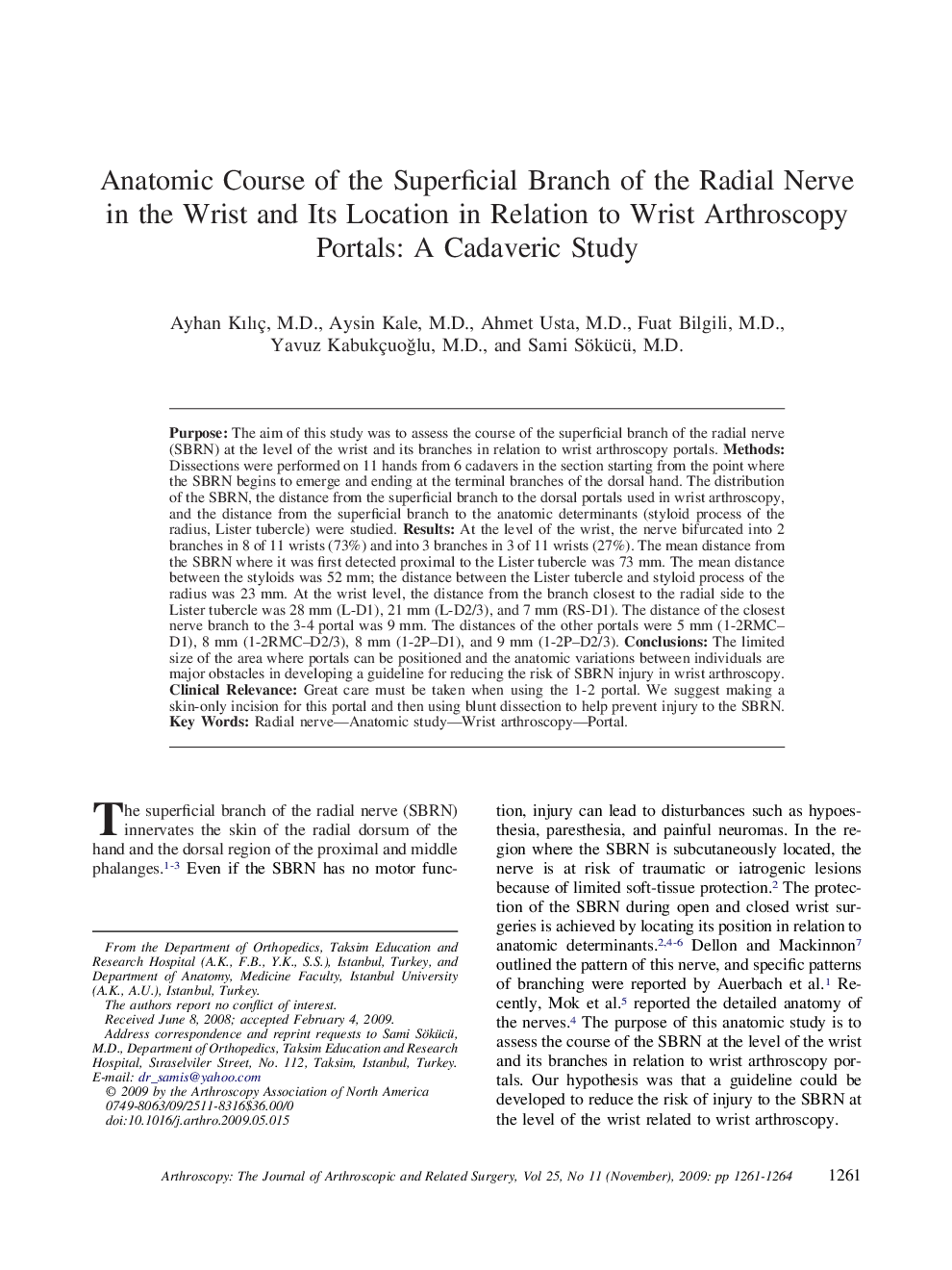| Article ID | Journal | Published Year | Pages | File Type |
|---|---|---|---|---|
| 4046583 | Arthroscopy: The Journal of Arthroscopic & Related Surgery | 2009 | 4 Pages |
PurposeThe aim of this study was to assess the course of the superficial branch of the radial nerve (SBRN) at the level of the wrist and its branches in relation to wrist arthroscopy portals.MethodsDissections were performed on 11 hands from 6 cadavers in the section starting from the point where the SBRN begins to emerge and ending at the terminal branches of the dorsal hand. The distribution of the SBRN, the distance from the superficial branch to the dorsal portals used in wrist arthroscopy, and the distance from the superficial branch to the anatomic determinants (styloid process of the radius, Lister tubercle) were studied.ResultsAt the level of the wrist, the nerve bifurcated into 2 branches in 8 of 11 wrists (73%) and into 3 branches in 3 of 11 wrists (27%). The mean distance from the SBRN where it was first detected proximal to the Lister tubercle was 73 mm. The mean distance between the styloids was 52 mm; the distance between the Lister tubercle and styloid process of the radius was 23 mm. At the wrist level, the distance from the branch closest to the radial side to the Lister tubercle was 28 mm (L-D1), 21 mm (L-D2/3), and 7 mm (RS-D1). The distance of the closest nerve branch to the 3-4 portal was 9 mm. The distances of the other portals were 5 mm (1-2RMC–D1), 8 mm (1-2RMC–D2/3), 8 mm (1-2P–D1), and 9 mm (1-2P–D2/3).ConclusionsThe limited size of the area where portals can be positioned and the anatomic variations between individuals are major obstacles in developing a guideline for reducing the risk of SBRN injury in wrist arthroscopy.Clinical RelevanceGreat care must be taken when using the 1-2 portal. We suggest making a skin-only incision for this portal and then using blunt dissection to help prevent injury to the SBRN.
